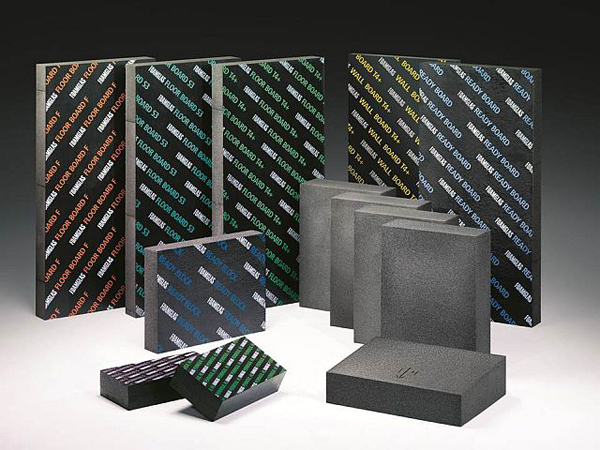
We’re starting work on the Wiki Natural House project in the UK. At this point it looks like we will use three foam glass products: foam glass blocks, foam glass insulation board under the slab floor and foam glass gravel in the tires. This plus the straw bale walls plus R-40 roof insulation and good windows will give us a superinsulated house.
From the Foamglas website:
“Foamglas® is a high-quality thermal insulation material manufactured primarily from recycled glass (>66%) and natural raw materials.
Benefits:
– Waterproof, consisting of closed cell cellular glass. Does not absorb any moisture and does not swell.
– Cannot rot and is pest-proof because it is inorganic.
– High compressive strength even with long-term loads due to its cell geometry without deformation.
– A1 non-combustible (to BS EN 13501), consisting of pure glass. In the event of fire, does not develop smoke or toxic gases.
– Vapour-tight, consisting of hermetically sealed glass cells. Constant thermal insulation value over decades. Prevents the penetration of radon.
– Dimensionally stable; neither shrinks nor swells. No warping, buckling or creep.
– Low coefficient of expansion, nearly equal to that of steel and concrete.
– Resistant to organic solvents and acids because it consists of pure glass.
– Free of environmentally damaging flame-retardants, protection agents, propellants and consists of over 66 % of high value recycling glass. Only regenerative electricity is used in the manufacturing process.
– Biological influences: Resistant against microbes as well as against rodent and piercing animals, insects/ vermin.”
Foamglas home page
Image source: http://www.ribaproductselector.com/ImageHandler.ashx?image=/docs/4/05864/external/images/FOAMGLAS-FoamglasBoards_create.jpg

Update:
There is a German web shop offering a mix of foam glass, clay and straw for isolation purpose (inside and outside):
http://lehm-bau-shop.de/blahglas-leichtlehm.html
It looks to be a good (but pricy) solution. Better to make your own mix.
If someone has “foamglass gravel”, it would be very helpful to make a kind of “water drop test”. Because it might be that foamglass also sucks up water. Just put a drop of water on it and see wheter it disappears in the material.
The Foamglass website says their brand does not soak up water. Not sure of other brands. They emphasize this point over and over. Water will stick to the surface but not soak in because the cells are closed.
Leca / expanded clay is not really waterproof. One of its applications is usage in hydrocultures (http://en.wikipedia.org/wiki/Hydroculture). In Germany hydrocultures are quite common in offices, you water it maybe once every two weeks and monitor the water level with a level indicator. Leca sucks up the water and releases it over the time. Leca is definitly more natural than Foamglas but its capability to store water makes me a little bit unsure.
Example for usage in offices: http://www.dieraumbegruener.de/pflanzentipps/Blaehton.php
Example for private usage: http://unite.lima-city.de/uzc/hydrokultur/hydrokultur.htm
(Sorry, both pages are in German but the pictures tell the story…)
Thanks, Juergen. So you have to be careful how you use expanded clay. It would be fine in earthbags if lower courses are gravel bags, etc.
Until now I always was for expanded clay like Leca, but I might get expanded glass gravel a try. Depending what’s availabe for a better price…
Do you think it’s more durable and waterproof? Seems like it.
Tip from Jason via Barbara Jones: Leca or Optiroc are alternatives to Foamglas.
http://www.leca.com/
http://www.lcs-optiroc.com/
Thanks Owen for the suggestion and for those options you posted. I particularly like the options.
I very much like this product. Reusing glass, waterproof and won’t break down is great and it’s insulation ability is very good. Is there anyone who manufactures this in the U.S.
You’ll have to do a search for ‘foam glass’.
Is this locally available?
Expensive?
You’ll have to do a search for ‘foam glass’ plus the name of your country.
There are also other options such as expanded clay aggregates.
https://naturalbuildingblog.siterubix.com/more-choices-for-insulated-earthbag-houses/
https://naturalbuildingblog.siterubix.com/juergens-earthbag-house-in-hungary/